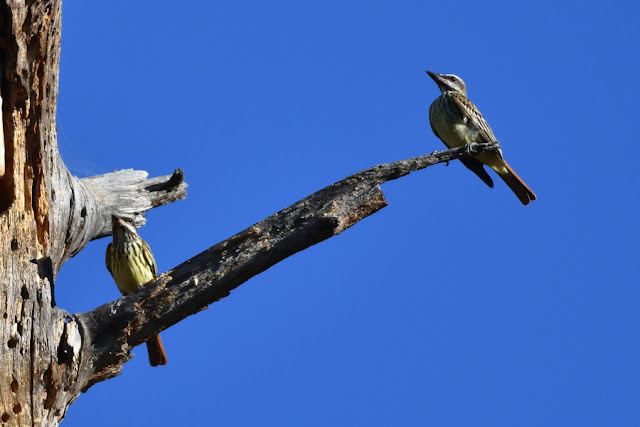After seeing reports of Eared Quetzal, Berylline Hummingbird, and Crescent-chested Warbler in Arizona, Jason Horn and I discussed going out there. A search online for flights revealed exorbitant prices ranging from $600 to $800. We decided to rent a car instead and drive all the way out there.
June 16th
At around 6 PM on the 16th after picking up our Volkswagen Jetta, Jason, another birding friend, and I began the long drive to the Chiricahua Mountains in southeastern Arizona. We crossed Pennsylvania, a sliver of West Virginia, and Ohio.
June 17th
We continued on into Indiana and passed through Illinois, Missouri, Oklahoma, Texas, and into New Mexico. Near dusk, we saw a Badger, a Long-billed Curlew, and a Swainson's Hawk.
Swainson's Hawk
June 18th
We finally arrived at the John Hands Campground in Arizona at around 2:30 AM. We snoozed a couple hours in the car until first light and then began looking for the Eared Quetzal, which had been reportedly roosting somewhere in that general area. The area around the campground provided views of Brown-crested Flycatchers at a nest, a pair of Sulphur-bellied Flycatchers, and Hairy Woodpecker.
Brown-crested Flycatcher
Sulphur-bellied Flycatchers
Hairy Woodpecker
Other notable birds in that area included a calling Mexican Whip-poor-will, Western Wood-Pewee, Plumbeous Vireo, and Brown Creeper.
We spent most of the morning looking for the Quetzal while walking down Herb Martyr Road, which paralleled the stream. During our search, I was able to get looks at my 'life'
Berylline Hummingbird, which was perched near Cabin #4.
Berylline Hummingbird
It eventually visited a nearby feeder along with Black-chinned Hummingbird and Blue-throated Mountain-Gem. Additional birds found in that area included Dusky-capped and Cordilleran Flycatcher, Hutton's Vireo, Mexican Jay, Bridled Titmouse, Blue-gray Gnatcatcher, Hermit Thrush, Yellow-eyed Junco, Spotted Towhee, Painted Redstart, and Black-throated Gray Warbler.
We left there and headed up to Pinery Canyon Campground, which was the last place the Quetzal had been seen. New birds found in the area included Mexican Chickadee, Bushtit, Pygmy Nuthatch, House Wren, Red-faced Warbler, Western Tanager, and Hermit Thrush.
Hermit Thrush
The real bonus was getting to see a pair of Spotted Owls that were preening each other at a daytime roost.
Spotted Owls
We continued down Pinery Canyon and then headed back up to Morse Canyon where the Crescent-chested Warblers had been reported. I had seen one of these in the Santa Rita Mountains back in February of 2008, but the other two guys hadn't. As we were nearing the end of the road, Jason spotted a Zone-tailed Hawk overhead. We quickly got out of the car and discovered three of them calling and dive-bombing each other.
Zone-tailed Hawks
At the parking area at the end of the road, we saw Arizona Woodpecker and Hepatic Tanager.
Arizona Woodpecker
Hepatic Tanager
We struck out on finding a Crescent-chested Warbler. Interesting birds that we did find along the trail included Rivoli's Hummingbird, Grace's Warbler, Painted Redstart, Western Tanager, and Yellow-eyed Junco.
Yellow-eyed Junco
Near sunset, we headed back out the road and headed north on Kansas Settlement Road. Birds seen along the road included Scaled Quail, Greater Roadrunner, Common Nighthawk, American Kestrel, Loggerhead Shrike, Northern Mockingbird, and Eastern Meadowlark. In the town of Willcox, we got something to eat and a motel room for some much-needed sleep.


























































